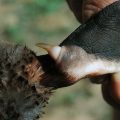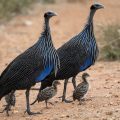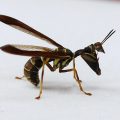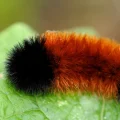Cape Buffalo (Syncerus caffer) are one of the most fascinating creatures to be found on an African safari. These majestic animals are often referred to as “Black Death” by locals due to their immense size and powerful behavior.
These large herbivores can reach up to 1,800 lbs and stand between 5-6 feet at the shoulder. With their wide heads, curved horns and dark brown to black coloration, they are a sight to behold. Their horns can reach up to five feet in length and offer protection from predators such as lions and hyenas.
Cape buffaloes display remarkable intelligence and complex social dynamics. They live in herds consisting of a few dozen individuals, with dominant bulls leading the group. The females stick close together while the males roam farther off in search of food or potential mates.
The diet of Cape buffalo consists mainly of grasses, leaves, bark, fruits, flowers and roots. During dry season they will migrate long distances in search of waterholes or seasonal grazing grounds. They have adapted well to living in harsh conditions such as drought or flooding.
Hunting Cape buffalo is considered a dangerous sport due to their unpredictable nature and aggressive tendencies when provoked or threatened. Every year dozens of hunters are killed while attempting to hunt these animals for their meat which reportedly tastes like tougher beef than domesticated beef, although it is illegal to sell the meat aftr hunting it down.
In conclusion, Cape buffalo are an impressive species that have adapted well to living in some of Africa’s toughest environments and provide a unique experience for anyone lucky enough to observe them in their natural habitat.
The Edibility of Cape Buffalo Meat
Cape buffalo meat can be a good eating experience, depending on the individual’s preference. It is said to have a taste that is similar to tougher beef, but leaner than domesticated beef. While it may not be for everyone’s palate, some hunters report that cape buffalo meat is a delicacy. However, it is important to note that it is illegal to sell the meat after you’ve hunted it.
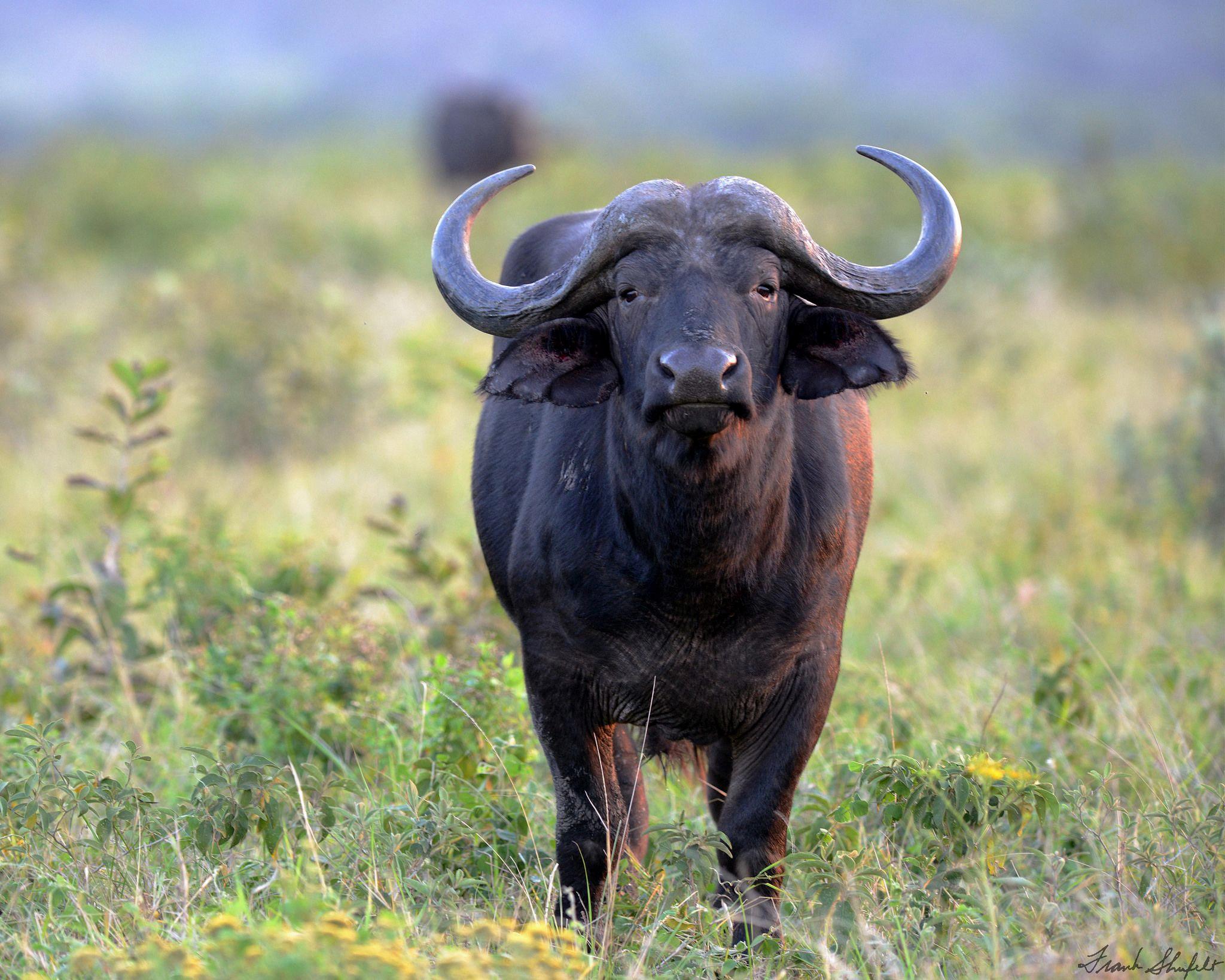
Source: naturerules1.fandom.com
Difference Between Water Buffalo and Cape Buffalo
The water buffalo (Bubalus bubalis) is a large, domesticated bovine native to South and Southeast Asia. It is used for many agricultural tasks such as plowing, harvesting, and threshing, as well as providing milk and meat. Water buffalo are typically smaller than the Cape buffalo (Syncerus caffer), which is a wild species native to sub-Saharan Africa. Cape buffaloes are considerably larger than water buffaloes and have longer horns that curve outward and then inard at the tips. The coloration of Cape buffaloes also tends to be darker, with dark brown to black fur on their backs and lighter fur on their undersides. In contrast, water buffaloes are often light gray or brown in color.
In terms of behavior, water buffaloes are generally more docile than Cape buffaloes. Water buffalo can be tamed and easily trained for tasks such as cart pulling, while the wild Cape buffalo are notoriously aggressive and unpredictable animals. Both species are social animals that live in herds; however, Cape buffaloes tend to form larger herds than water buffaloes do.
In conclusion, there are several differences between water buffalo and Cape buffalo: size, coloration, behavior, and herd size all differ between these two species of bovines.
The Origin of the Name Cape Buffalo
The Cape buffalo is so named due to its geographic origin, as it is native to the southernmost region of Africa. It is also knon as the “African buffalo” and the “Sabi buffalo”. This subspecies has distinctive features that set it apart from other buffalo species, including being the largest and darkest in color. The Cape buffalo’s dark coat ranges from deep brown to almost black, making them easily distinguishable from other subspecies. They are also taller than their counterparts and have a reputation for being very aggressive and dangerous when provoked. These unique characteristics have earned them their name, as they are only found in the Cape region of Africa.
The Unique Characteristics of a Cape Buffalo
The Cape buffalo is a truly magnificent creature with its imposing stature, typically reaching seven feet from tip to tail. But it is the impressive horns that truly set this animal apart. Large adult males have horns that join in the middle of their heads and create a helmet-like shape, thanks to a hard shield called a “boss.” This, combined with the curved shape of the horns, makes for an unforgettable sight. The horns can also be used to distinguish age and sex of the animal.
Can Cape Buffalo Be Domesticated?
No, cape buffalo cannot be tamed. While their Asian counterparts, the water buffalo, have been domesticated for centuries, African Cape buffaloes are too unpredictable and dangerous to ever be suitable for domestication. This is due to their strong defensive capabilities and lack of natural predators other than humans and large crocodiles. In addition, they are not easily trainable and have a tendency to become aggressive when provoked or stressed. For these reasons, it is not possible to tame African Cape buffaloes and make them suitable for domestication.
Does the Taste of Buffalo Resemble That of Cow?
No, buffalo does not taste like cow. Buffalo has a lighter flavor than beef, and it is often described as slightly sweet and deliciously tender. It has significantly less fat, calories and cholesterol than beef, so it doesn’t have the same heaviness of beef. Buffalo meat also has a more intense flavor; some people even describe it as having a wild taste.
The Deadliest Animal in Africa
Africa is home to a number of dangerous animals, but the Cape buffalo (Syncerus caffer) may be the continent’s deadliest. Also known as the “Black Death” or “Widowmaker,” this massive bovine can weigh up to 1,000 kgs and stand up to 1.7 meters tall. It is incredibly aggressive and will attack anyhing that it perceives as a threat, including lions and humans.
Cape buffalo are highly unpredictable and have been known to charge without provocation or warning. They travel in herds that can number in the thousands and use a coordinated defense when threatened by predators. This formidable combination of size, strength, and numbers makes them one of the most dangerous animals on the African continent.
Can Cape Buffalo and Cattle Breed Together?
No, Cape buffalo cannot breed with cattle. The Cape buffalo, which has horns that point forward and outward, has 54 chromosomes, which is significantly different from the 60 chromosomes found in cattle. Furthermore, even though the swamp buffalo and river buffalo have 48 and 50 chromosomes respectively, neither can interbreed with cattle due to the divergence in chromosome numbers. The hybrid produced by interbreeding the swamp and river types only has 49 chromosomes. This difference in chromosome numbers means that it is not possible for cattle to cross-breed with any of these three breeds of buffalo.
Are Buffalo and Bison the Same Animal?
No, buffalo and bison are not the same thing. Buffalo are a type of Old World bovidae, native to Africa and Asia. Bison, on the other hand, are found in North America and Europe. Both buffalo and bison belong to the same family of animals, but they are not closely related to one another. Buffalo generally have smaller heads in comparison to bison, with curved horns and a distinctive black or brown coat. Bison have larger heads than buffalo, with straight horns that point upward and a characteristic brown fur.
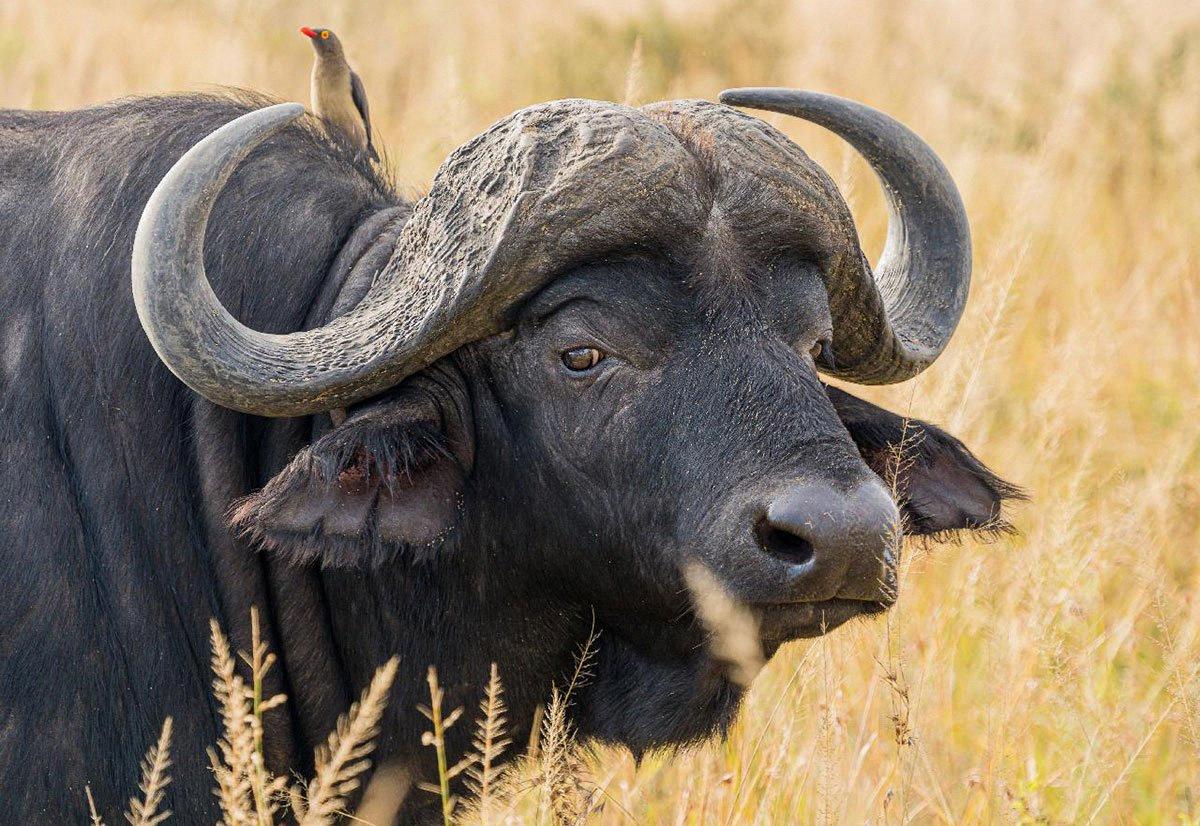
Source: theanimalfacts.com
The Existence of Wild Buffalo Today
Yes, wild buffalo still exist in certain parts of North America. While bison used to roam across much of the continent, today they are considered “ecologically extinct” as a wild species throughout most of their range. However, two small herds of pure, wild Yellowstone bison remain at Fort Peck and Fort Belknap Indian Reservations, providing a glimmer of hope for the species. Conservation efforts are ongoing to help protect and restore these herds and other bison populations in North America.
Estimating the Number of Cape Buffalo Remaining in the World
According to the IUCN, there are approximately 900 000 Cape buffalo (also known as African Buffalo) left in the world. This figure is based on a global population estimate, with more than three-quarters of the species found in protected areas. Though the Cape buffalo is not considered vulnerable, conservation efforts remain important to ensure that this species can continue to thrive in its natural habitat.
Aggressiveness of the Cape Buffalo
Yes, the Cape buffalo can be quite aggressive. They are particularly so when they have been wounded or if any of their calves are under threat. This means that hunters should always stay at least 20-60 yards away when attempting to shoot them and be prepared to run away quickly in case the shot does not bring it down.
Predatory Nature of the Cape Buffalo
No, a Cape Buffalo (Syncerus caffer) is not a predator. It is an herbivore – it feeds primarily on grasses and other vegetation in the savannas of Africa. While it has few natural predators, such as lions, leopards and spotted hyenas, these animals mainly pose a threat to its calves rather than the adults themselves. Though it can be dangerous if provoked, the African Buffalo is usually timid and non-confrontational.
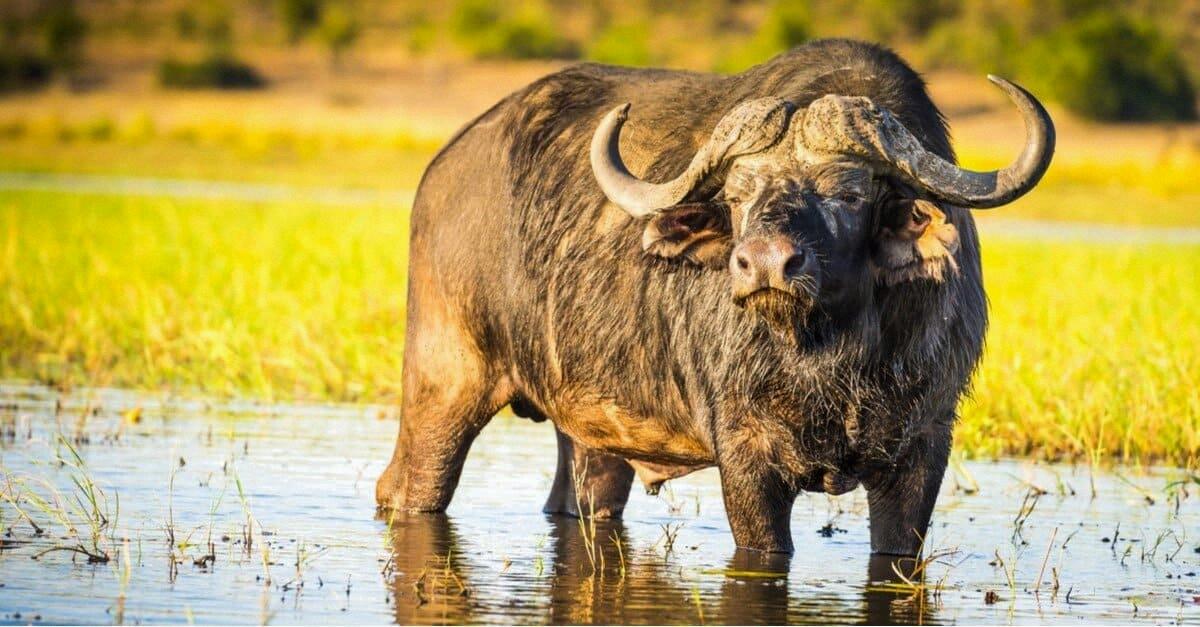
Source: a-z-animals.com
Five Facts About Buffalo
1. Buffalo are large animals, typically measuring between 6.8 to 11 feet in length, 5.6 feet in height and weighing between 660 to 1900 pounds.
2. Buffalo have smooth tongues which they use to help them graze on grass and other vegetation.
3. They are surprisingly good swimmers and can easily cross deep rivers and streams.
4. Unlike many other species, buffalo rarely have twins when giving birth to calves.
5. Buffalo have a reputation for being particularly dangerous animals and are known to have killed more hunters than any other species, as well as lions!
Can Cape Buffalo Swim?
Yes, cape buffalo can indeed swim! They are very strong swimmers and have been known to traverse deep waters in search of better grazing areas. In fact, swimming is an important part of a Cape buffalo’s life; they use it as a way to cool off during hot days, move around water bodies, and find food sources. Additionally, since Cape buffalo live in close proximity to human populations, swimming can also provide them with an escape from potential predators such as lions or crocodiles.
Conclusion
In conclusion, the Cape buffalo is a wild animal found in southern and East Africa. It is easily distinguishable from other Buffalo due to its large size and dark coloration. Its curved horns are also a distinguishing feature, with adult males having a helmet-like formation created by the horns meeting in the middle of their heads and being joined by a hard shield called a “boss”. Hunting of Cape buffalos is illegal, as it is not legal to sell the meat after you’ve hunted it. Despite this, dozens of hunters still get killed each year hunting cape buffalo.


